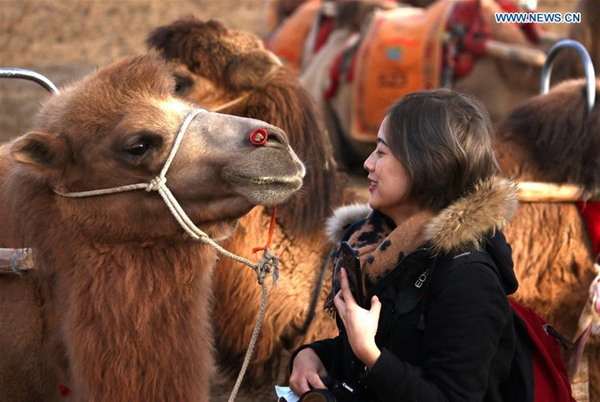China’s anti-graft drive wins people’s trust
More than 70,000 officials at or above the county-head level have been investigated for suspected corruption since the 18th Communist Party of China (CPC) National Congress in 2012, the top anti-graft body of the CPC said Saturday.
The anti-graft campaign continues to gain momentum and win applause from the public, according to a statement on the website of the CPC Central Commission for Discipline Inspection (CCDI).
Five years ago, China’s new leadership launched a high-profile anti-corruption campaign, which has led to the downfall of a number of high-level officials, known as “tigers,” and lower-level “flies” who serve at the grassroots level.
Among the tigers felled in the campaign were Zhou Yongkang, a former member of the Standing Committee of the Political Bureau of the CPC Central Committee; Bo Xilai, former Party chief of Chongqing Municipality; Xu Caihou and Guo Boxiong, both former generals and vice chairmen of the Central Military Commission; as well as Ling Jihua and Su Rong, former vice chairmen of China’s top political advisory body.
According to the CCDI, 1.34 million township-level and 648,000 Party members and officials in rural areas were also punished during that period.
The CPC, the world’s largest ruling Party, released an “eight-point” rule on austerity in late 2012 to reduce undesirable work practices. The CCDI now has a monthly reporting system on the implementation of the rules within provincial-level governments, central Party and governmental agencies, centrally administered state-owned enterprises and central financial institutions.
China also worked with the international community to hunt corruption suspects who had fled overseas via the “Sky Net” manhunt and other operations.
By the end of August, 3,339 fugitives were captured from more than 90 countries and regions, with 628 of them being former officials. About 9.36 billion yuan (around 1.41 billion U.S. dollars) was recovered, the CCDI said.
Among the top 100 fugitives listed on an Interpol red notices, 46 have been arrested, it said.
Amid high pressure, the number of corrupt officials who fled overseas saw a drastic decrease in 2016. A total of 19 fugitive suspects fled China in 2016, compared with 31 in 2015 and 101 in 2014.
In the past five years, the CPC Central Committee has tirelessly addressed “si feng,” or “the four forms of decadence” — formalism, bureaucratism, hedonism and extravagance.
By the end of 2016, 155,300 violations against the eight-point code on frugality and maintaining close links with the masses had been investigated. Among the violations, 78.2 percent took place in 2013 and 2014, 15.1 percent took place in 2015, and 6.7 percent in 2016, indicating marked decreases each year.
Moreover, the CCDI has shown that it is serious about tackling corruption within its own ranks, which it refers to as “darkness hiding beneath the light.”
By the end of 2016, 17 disciplinary officials were investigated and 7,900 others were punished, it said.
A survey by the National Bureau of Statistics showed 92.9 percent of people were satisfied with the anti-corruption campaigns in 2016, 17.9 percentage points higher than in 2012.
